B0041VYHGW EBOK (110 page)
Authors: David Bordwell,Kristin Thompson


6.142 … nondiegetic shots of the lion bed of King Tutankhamen …

6.143 … and his golden mask.
There are still other alternatives to classical continuity, especially with respect to time. Although the classical approach to order and frequency of story events may seem the best option, it is only the most familiar. Story events do not have to be edited in 1-2-3 order.
Modern audiences have become accustomed to scenes that are interrupted by brief flashbacks. But some filmmakers create greater uncertainty by inserting a shot that may or may not be out of story order. Michael Haneke’s
Caché
repeatedly shows a luxurious apartment building seen from across the street. After one nighttime view, there is a two-second shot of a boy watching, also at night
(
6.144
,
6.145
).
At first, this shot seems to be in correct order, like the shots of Jeff looking at his neighbors in
Rear Window
(
6.87
,
6.88
,
6.90
–
6.93
). Later we’ll learn that
Caché
’s narration has misled us severely.
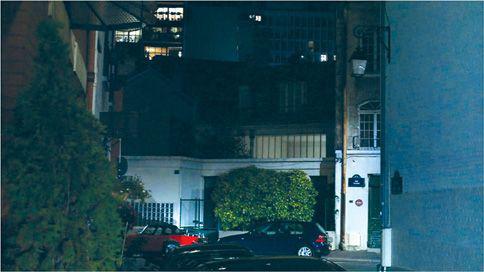
6.144 This external shot from
Caché
seems at first to be in temporal order, but later it’s revealed to be a replayed videotape.
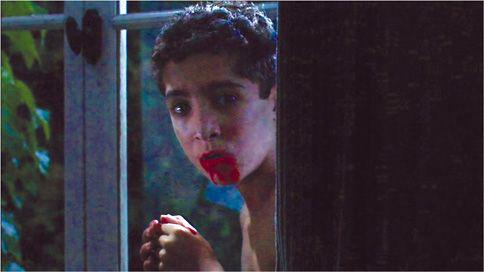
6.145 The glimpse of the watching boy is also misleading. He seems to be watching the house, but in fact this shot is a flashback, and he is watching something very different.
More insistently, in Resnais’s
La Guerre est finie,
scenes cut in conventional continuity are interrupted by images that may represent flashbacks, or fantasy episodes, or even future events. Editing can also play with variable frequency for narrative purposes; the same event can be shown repeatedly. In
La Guerre est finie,
the same funeral is depicted in different hypothetical ways, with the protagonist either present or absent.
Again, Godard offers a striking example of how editing can manipulate both order and frequency. In
Pierrot le fou,
as Marianne and Ferdinand flee her apartment, Godard scrambles the order of the shots
(
6.146
–
6.149
).
Godard also plays with frequency by repeating one gesture—Ferdinand jumping into the car—but showing it
differently
each time. Such manipulation of editing blocks our normal expectations about story action and forces us to concentrate on the very process of piecing together the film’s narrative.
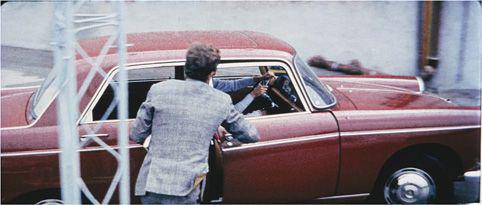
6.146 In
Pierrot le fou,
initially, Ferdinand jumps into the car as Marianne pulls away …
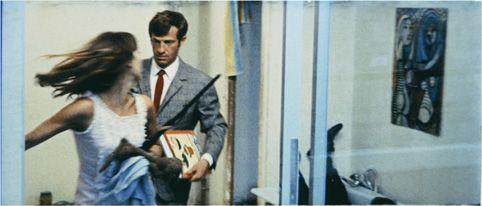
6.147 … but then the couple are seen back in their apartment.
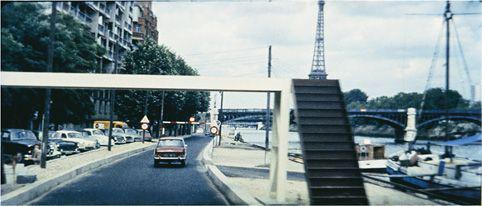
6.148 Next the car races down a street …
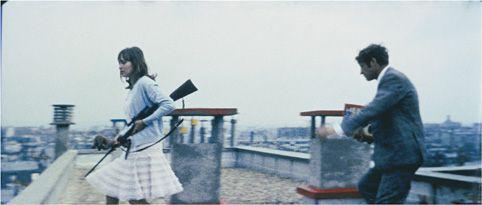
6.149 … and then Marianne and Ferdinand climb onto a rooftop, an event that occurred before they drove off.
The editing may take liberties with story duration as well. Although complete continuity and ellipsis are the most common ways of rendering duration, expansion—stretching a moment out, making screen time greater than story time—remains a distinct possibility. François Truffaut uses such expansions in
Jules and Jim
to underscore narrative turning points, as when the heroine Catherine lifts her veil or jumps off a bridge.
Filmmakers have found creative ways to rework the most basic tenets of the continuity system. We’ve indicated, for example, that a match on action strongly suggests that time continues across the cut. Yet Alain Resnais creates an impossible continuous action in
Last Year at Marienbad.
Small groups of guests are standing around the hotel lobby; one medium shot frames a blonde woman beginning to turn away from the camera
(
6.150
).
In the middle of her turn, there is a cut to her, still turning but in a different setting
(
6.151
).
The smooth match on action, along with the woman’s graphically matched position in the frame, implies that she is moving continuously, yet the change of setting contradicts this impression. As we’ll see in
Chapter 10
, experimental films push ambiguous or contradictory editing even further.
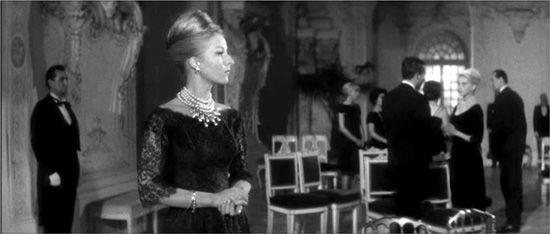
6.150 In
Last Year at Marienbad,
a match on action …
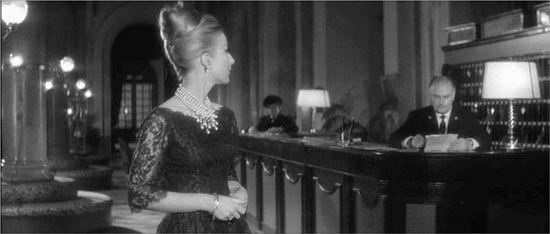
6.151 … across two settings.